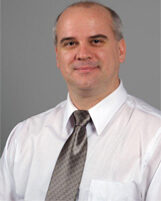1. General information
This component of the research program shall be undertaken by a PhD candidate to develop advanced algorithms and calibration methods so that commercial GPS receivers configured with multiple antenna elements can estimate the orientation of the antenna plate to acquire precise body attitude for an Army soldier-navigation-solution (SNS). Two approaches are being studied for attitude estimation: 1) with low cost inertial sensors, 2) with multi-element antenna system on a commercial GPS receiver. The outcome of these two studies may require that for very precise attitude estimation a tightly coupled GPS/INS configuration may be needed to satisfy the stringent pointing accuracy for SNS. Potential improvement of using GNSS signal will be investigation.
2. Research Project Proposal
Principle objective of this research program is to develop advanced attitude estimation algorithms, receiver channel calibration methods, receiver tracking loop design to establish attitude estimation limits with a GPS receiver connected to multiple antennas. To achieve these objectives, a PhD student shall gain expertise over a period of three years in advanced signal processing techniques, Bayesian estimation, probability density function estimation techniques by using Machine Learning theory, and adaptive control systems for the design of carrier tracking loop with minimal steady state phase noise error. Research emphasis shall be placed on the development of algorithms using the above scientific disciplines to produce precise carrier phase measurements out of the receiver tracking loops.
In addition to estimating a precise carrier phase measurement, it is also imperative for accurate attitude estimates that the receiver mitigates multipath error. The problem of inferring attitude from multiple antennas requires a minimum of three position solutions, one baseline and the other two auxiliary, from these solutions Euler angles: roll, pitch and yaw can be computed. Due to small separation between antenna elements, it may be required to use a double differenced phase measurement to eliminate receiver clock phase noise.
To satisfy schedule and cost constraints this PhD student shall also have an opportunity to develop expertise in the use of Matlab/Simulink toolset considered a de-facto standard worldwide for modern engineering product analysis and synthesis using Model Based Design (MBD) methodologies, for the purposes of rapid prototyping, requirements analysis, software verification and validation per conventional commercial and military standards. Computational loading analysis of these models should be quantified so that cost benefit analysis can be performed for the selection of hardware platforms using the above tools.
Some outcomes of this research program could be but not limited to: 1) to develop an algorithm that can provide accurate carrier phase measurements, 2) minimize multi-path errors, 3) design a high order adaptive control system for the receiver code and carrier tracking loops such that zero steady state error is realized within short settling time periods, 4) expansion of Matlab/Simulink proprietary GNSS receiver toolset capabilities currently available at ETS laboratories.
A suggested chronological research roadmap is provided subject to minor alterations as required. First the doctoral student needs to explore previous work (literature review) in the area of attitude estimation techniques implemented in GPS receivers, then develop a detailed calibration procedure for the purposes of eliminating inter channel receiver bias error. Investigate deterministic and stochastic filtering techniques to minimize carrier phase noise outputs. Followed by, designing higher order control system for tracking loops so that zero steady state error is realized. This research program shall conclude with an extensive report documenting and demonstrating test results with satellite signal generated and real world data sets, these results shall be compared with outputs of a standard GPS receiver to demonstrate enhanced reduction in phase noise out of the tracking loops and thus enhanced and robust attitude estimates.
3. Importance for the partner
Capstone report has listed new technologies which are important for the Canadian Soldier. Numerica Technologies is working on a larger project of ETS contribution. The determination of the position of a target for a soldier is of great importance for our partner. The soldier should be equipped with light devices, efficient technologies, precise and robust embedded systems. Such attitude determination system should have all these qualifications so that the soldier will use it with minimal complexity. For example only, the end result device may be integrated within the helmet of the soldier. An optical monocular lenses could be deployed with a cross target in the center of the optical such that the soldier can fix his desired object. The electronic within the system should be capable of computing in real-time the precise attitude and position of the target such that this information could be relayed to other team element part of the soldier infrastructure. ETS will play a portion of this role to focus its research on attitude determination. The ranging determination and analysis will be cover by another research group of Numerica.
![]()
